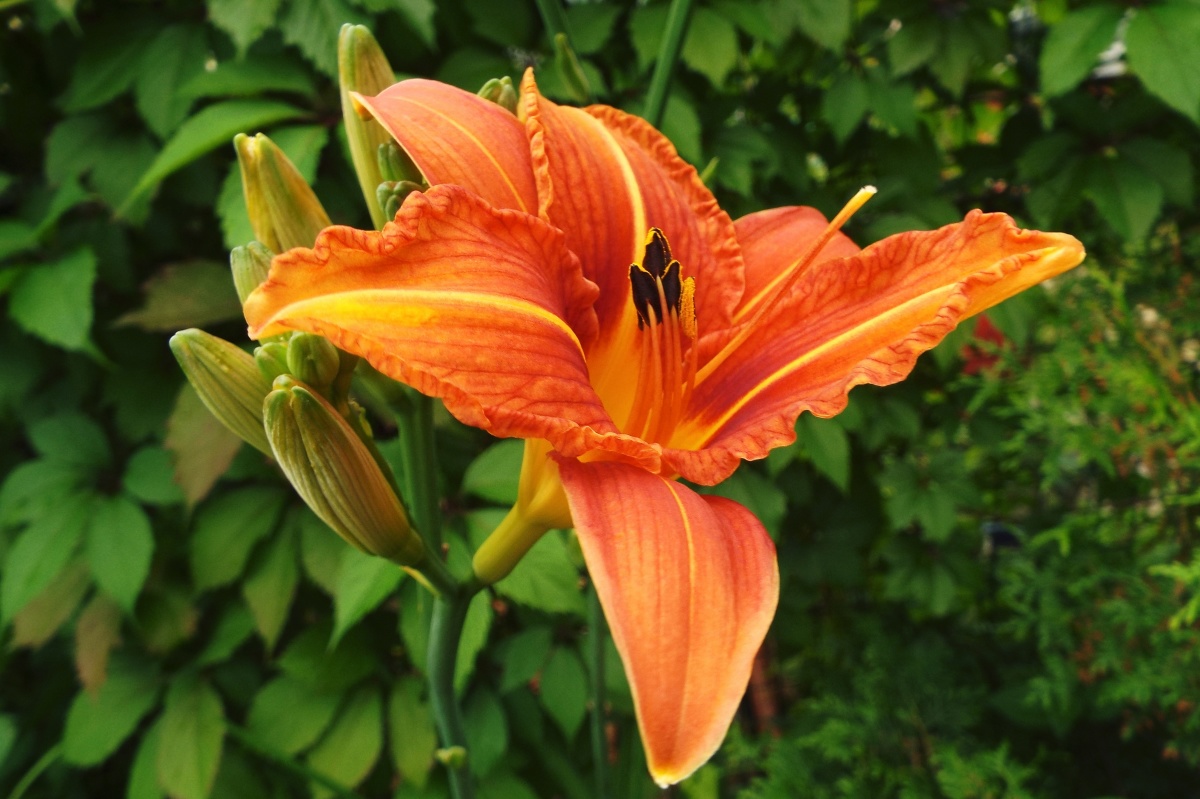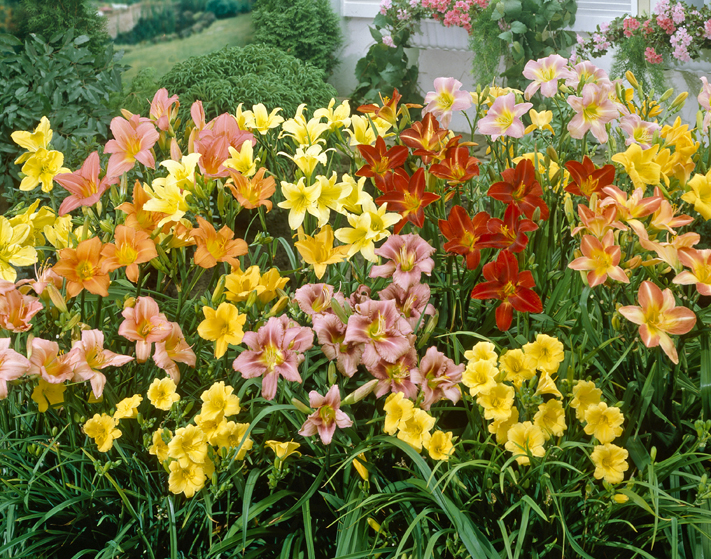Daylily stands out among the gardeners' favorite perennials. The unpretentious plant pleases with its bloom from spring to autumn, coloring the garden with bright colors. In order for the flower to bloom luxuriantly in the summer, it is necessary to properly prepare the daylily in the fall for the winter: cut, feed, cover it before the cold. Little work, but for this he will thank the daylily with magnificent flowering.
Content
- 1 What is daylily
- 2 Preparing daylilies for winter
- 3 Chemical Prevention
- 4 Pruning in autumn
- 5 Winter shelter organization
- 6 The specifics of preparing daylilies for winter in the regions
- 7 Secrets and nuances of a successful wintering
- 8 The main mistakes when caring for daylilies in the autumn
- 9 Conclusion
What is daylily
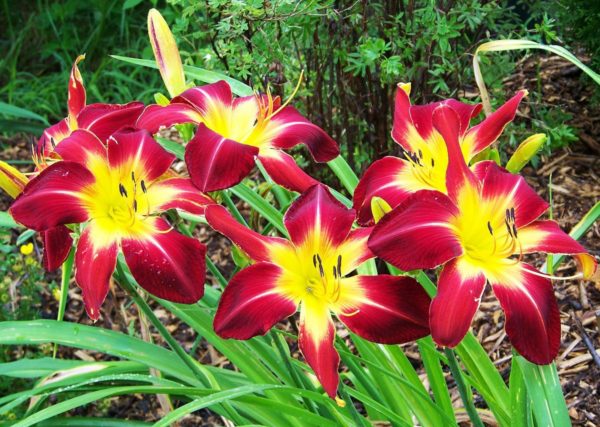 Krasodnev - this is also called this plant, it is part of the large Asphodel family. The genus has more than sixty thousand varieties and hybrids, differing from each other in the color of the petals, flowering time.
Krasodnev - this is also called this plant, it is part of the large Asphodel family. The genus has more than sixty thousand varieties and hybrids, differing from each other in the color of the petals, flowering time.
Perennial undemanding to care, but grows better and blooms in sunny areas with well-drained soils. Often flower growers use containers for planting, placing them then throughout the site.
 You may be interested in:
You may be interested in:Most of the hybrid forms and varieties are semi-evergreen and evergreen crops that retain the ability to grow throughout the calendar year. Therefore, it is necessary to carefully prepare the landing for the winter cold. In the fall, a number of measures are required: cut off the fading "arrows" of the leaves of the plant, and treat them with pests. In regions where winters are severe and there is a high probability of freezing flowers, daylilies cover. Especially careful are exotic daylily hybrids, whose homeland is warm overseas countries. In the northern regions of Russia, they often do not survive in the winter, so it is better to grow simpler, but frost-resistant varieties.
Preparing daylilies for winter
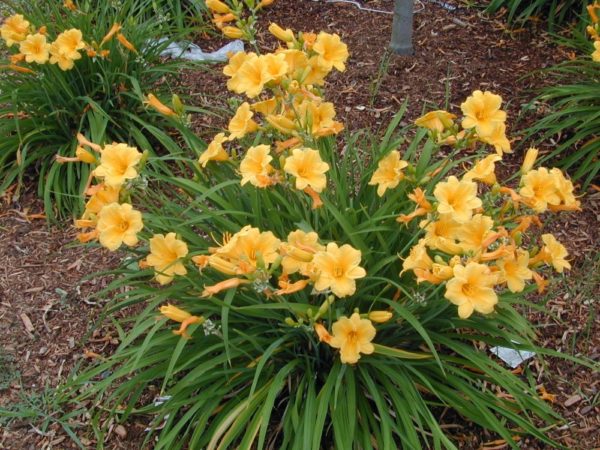 Plants are unpretentious, frost-resistant, but dependent on many external factors, including the correctness of agricultural technology. You cannot throw daylilies to their own devices, it is important to prepare them for wintering and minimize all risks.
Plants are unpretentious, frost-resistant, but dependent on many external factors, including the correctness of agricultural technology. You cannot throw daylilies to their own devices, it is important to prepare them for wintering and minimize all risks.
Watering
If in the summer daylilies are watered 1-2 times a week, then in autumn plants usually do not need watering. Occasionally, the soil near the bushes is moistened, provided that there is no rain for a long time.
Top dressing
Day care for daylilies includes top dressing. Summer flowering takes a lot of energy, for a perennial it is important to restore the supply of nutrients before the cold.
Unlike spring top dressing, when a full complex of all elements is added, in the fall they prefer potash and phosphorus compounds. Potassium, in addition to contributing to long lush flowering, increases winter hardiness of crops. Daylily is easier to tolerate cold, temperature changes, in the spring it adapts faster after cold weather and goes on growing.
The introduction of phosphorus additives is effective: superphosphate, phosphate rock. The latter refers to fertilizers that require a long time to dissolve and assimilate them by plants.Therefore, the best time for making such top dressing is autumn, so that the plant meets spring full of energy.
Daylilies transplanted in autumn are also surely fed. Phosphorus and potassium help plants take root faster in a new place, undergo acclimatization and be ready for wintering. Thanks to them, the laying of flower buds is more active, the culture's resistance to various infections and adverse weather factors is increased, the root system is strengthened and healed.
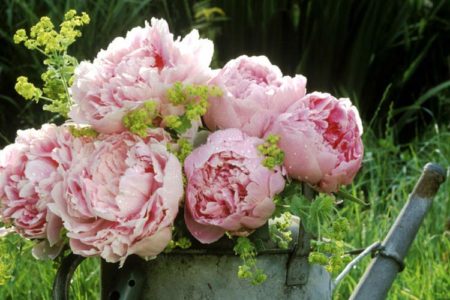 You may be interested in:
You may be interested in:Mineral additives are often replaced with wood ash, which has a beneficial effect on the general development of daylilies. It contains more than three dozen important micro- and macroelements for plants that contribute to increasing winter hardiness of the culture.
Fertilizers are applied in liquid form under the bushes, strictly observing the norms specified in the instructions. The soil is slightly moistened so that the solutions do not burn the roots of the plants. Workpieces must not fall into a sheet outlet
Chemical Prevention
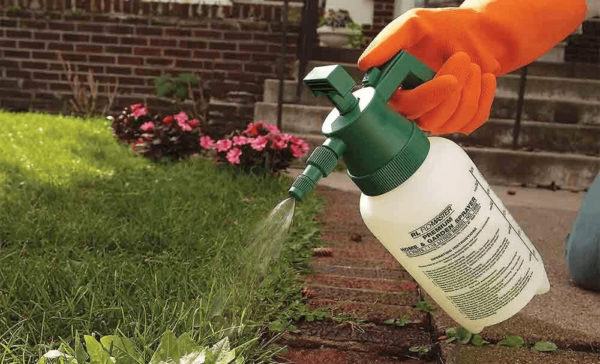 In the fall, plantings are treated with pest preparations, preventing their arrangement for the winter. Threaten to plants:
In the fall, plantings are treated with pest preparations, preventing their arrangement for the winter. Threaten to plants:
- thrips;
- gall midge;
- nematodes;
- a bear;
- slugs and snails.
Cleaning and trimming helps protect daylilies, but you can’t do without spraying. Insects usually descend for wintering to rhizomes, and only chemicals will help here.
For treatments use:
- Decis;
- Actellik;
- Aktaru;
- Bi-58.
Working solutions are prepared according to the instructions, observing the processing standards. To prevent daylily infection by diseases, copper-containing compounds (HOM, Oksikhom), as well as Fitosporin or Diskor are used.
It is recommended to regularly disinfect agricultural equipment during the season (for example, with a solution of bleach), including after completion of work before winter storage.
Pruning in autumn
After flowering, closer to the cold, daylilies look untidy. The leaves begin to dry and die off in sleeping varieties, the flower stalks dry out. Due to rains and high humidity, rot often appears, which passes to the root neck. Timely pruning will prevent this. It is recommended to remove the peduncles immediately after flowering, and faded buds are also removed.
When to cut in spring or fall
A debatable question for gardeners, although it is resolved simply: it all depends on the state of planting, the climate of the area, soil, and surrounding conditions. Most experts recommend cutting daylilies in the fall, citing the following arguments:- trimmed plants are better protected from infections and pests;
- minimizes the risk of decay of the root neck;
- in winter, pruned plants tolerate frost better;
- flower beds get a neat well-groomed appearance.
In the spring, the culture starts to grow early, so cutting the daylily at this time of the year can seriously damage the plantings, slow down their development and flowering time.
Best time for pruning in the fall
 The exact time for trimming the aerial parts of the plant depends on the climate and weather conditions of the area. Experienced flower growers prune leaves when, according to the forecast, the first frosts are coming. The onset of a stable cooling is a signal that it is time to cut the daylily, then the kidneys will not have time to “wake up” and fall under frosts.
The exact time for trimming the aerial parts of the plant depends on the climate and weather conditions of the area. Experienced flower growers prune leaves when, according to the forecast, the first frosts are coming. The onset of a stable cooling is a signal that it is time to cut the daylily, then the kidneys will not have time to “wake up” and fall under frosts.
If pruned earlier, then before the cold weather daylilies will begin to vegetate, give new sprouts, which will lead to the death of plants.
Pruning technique
The trimming procedure is simple:
- Prepare garden secateurs.
- Carefully cut the leaves at a height of 12-15 cm.
- Cut the foliage removed, burn.
It is not recommended to stack cut leaves in compost, as they may contain pests and pathogens of infections.
Care after trimming
After harvesting cut and dried leaves, weeds, planting is left until the cold. No work is carried out before the onset of winter.
Winter shelter organization
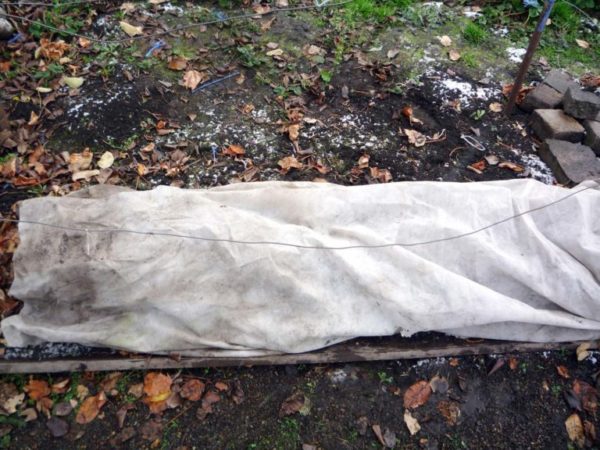 Daylilies are considered a frost-resistant crop, but care must be taken into account the characteristics of the variety or hybrid. In recent years, the climate has seriously changed, sudden thaws in the midst of winter are not uncommon even for Siberia and the North-West. And if this flower withstands stable, not very low temperature indicators, then differences, thaws, and then severe frosts most often lead to the death of plants.
Daylilies are considered a frost-resistant crop, but care must be taken into account the characteristics of the variety or hybrid. In recent years, the climate has seriously changed, sudden thaws in the midst of winter are not uncommon even for Siberia and the North-West. And if this flower withstands stable, not very low temperature indicators, then differences, thaws, and then severe frosts most often lead to the death of plants.
Is it necessary to shelter daylilies for the winter
In the south, this is not necessary, but in areas of the middle zone, the North-West, Siberia, and the Urals, it is recommended to cover plantings. This is especially true for areas where in winter there are severe prolonged frosts with a small amount of snow.
How to cover daylilies for the winter
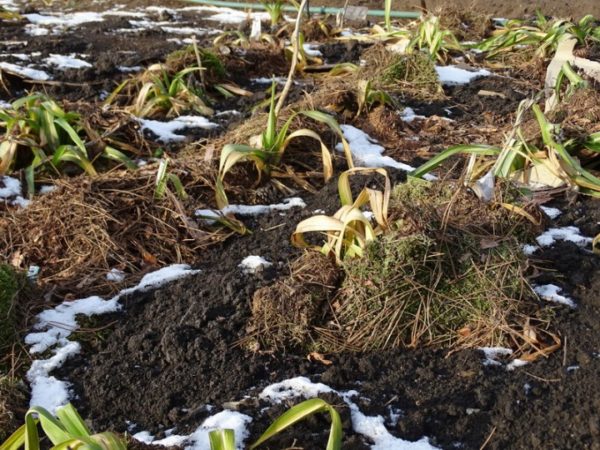 There is no complicated work in preparing the perennial for winter. It is enough to cook the required amount of spruce branches, peat or dry straw. Suitable for mulching finely chopped pine bark.
There is no complicated work in preparing the perennial for winter. It is enough to cook the required amount of spruce branches, peat or dry straw. Suitable for mulching finely chopped pine bark.
It is enough to sprinkle plantings with a layer of mulch up to 10 cm thick. If you expect severe frosts in winter, the layer of daylily cover for the winter is made thicker, they also use covering material for additional protection.
Planting cover only with the onset of frost. Early shelter in warm weather will cause the plants to warm up, the same thing happens if in the spring they are delayed with the removal of protection.
The specifics of preparing daylilies for winter in the regions
In different regions of Russia, flower growers take into account the climate. It is also necessary to take into account the specifics of the variety: how it tolerates wintering, whether plants need shelter.
In the middle lane
In the suburbs, nearby areas daylilies for the winter cover with non-woven materials or mulch. Judging by the reviews of gardeners, the culture usually tolerates wintering easily even without shelters. But still, it’s not worth the risk, especially if southern hybrids from the American continent are growing on the site, not accustomed to prolonged cold weather.
In the Volga region
In this region, daylily is required to be covered with fir branches, bark, peat. The mulch layer is at least 10-15 cm. In winter, they monitor the snow cover over the plantings, adding snow if necessary for the heat of plants.
In the Urals and Siberia
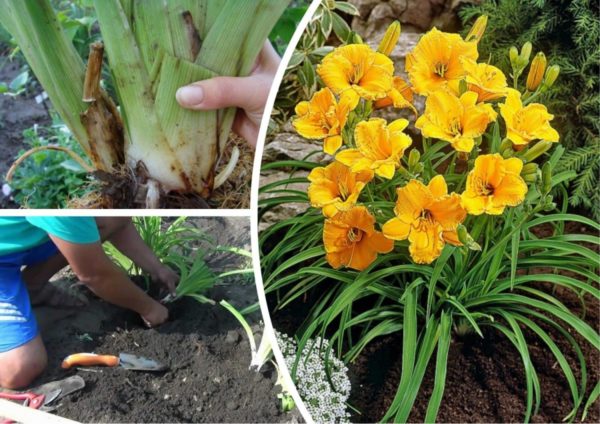 In the harsh conditions of these regions, daylilies can not easily survive the winter. Even well-covered plants (mulch, covering material, snow) can freeze during prolonged frosts below 35 degrees.
In the harsh conditions of these regions, daylilies can not easily survive the winter. Even well-covered plants (mulch, covering material, snow) can freeze during prolonged frosts below 35 degrees.
Experienced gardeners usually gently dig out rare species of daylilies with a lump of land and store them all winter in a basement or dry cellar. Another option: gently dig up the rhizomes of plants, place them in prepared soil or sand in the cellar. Regularly monitor the condition of plants, preventing the appearance of dryness or rot. In the spring, rhizomes are planted in the same place in the garden.
Secrets and nuances of a successful wintering
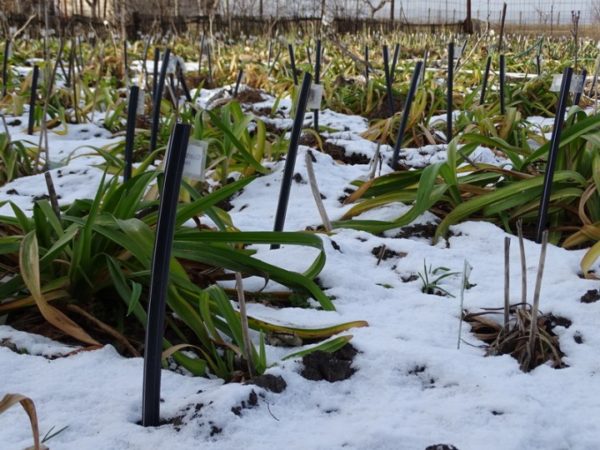 Knowledge of the intricacies of agricultural technology will help daylilies successfully survive the cold season.
Knowledge of the intricacies of agricultural technology will help daylilies successfully survive the cold season.
- You should know in advance as much information as possible about the varieties growing on the site. Everything is important: origin, frost resistance, flowering time.
- Shelter mulch and special non-woven materials are prepared in advance so that the cold is not taken by surprise.
- Comply with the rules for fertilizing flowers, excluding nitrogen-containing fertilizing.
- Daylilies cover only with the onset of cold weather, taking into account forecasts for the coming winter. A layer of mulch, laid before the deadline, will lead to the appearance of rot, the aging of the root system, the death of a perennial.
The main mistakes when caring for daylilies in the autumn
Despite the unpretentiousness of a beautiful perennial flower, it is important to follow the rules of agricultural technology. But even experienced flower growers do not always know how to care and how to prepare daylilies for winter. Here are some errors:
- Making fall dressings with nitrogen additives. The aboveground part begins to grow, which leads to a weakening of the plant before wintering.
- Incorrect pruning of lush bushes. Leaves are cut at a height of not more than 15 cm, leaving an average length of hemp. Low pruning leads to decay of plants, untimely growth of buds.
- Early shelter of mulch. The root system vypryvaet, which leads to the death of flowers.
- Perennial pruning too early. In this case, in warm autumn, the plant releases leaves, grows actively, taking from the roots the nutrients they need for wintering. Will have to cut the bush again, weakening the plant before winter.
- Dense shelter of the base of the bush, the use of heavy and wet mulch. Sawdust, spruce branches, straw should be dry, clean, free of debris and foreign objects.
Improper preparation leads to problematic wintering of plants, and in some cases to freezing and death of flowers.
Conclusion
The magnificent flowering of a beautiful perennial decorates the site, pleasing to the eye. But in order for the daylily to survive in the capricious climate of various regions of Russia, it is necessary to ensure proper care in the fall, proper preparation of the plant for winter. Subject to the simple rules of agricultural technology, a magnificent unpretentious plant will bloom all summer.

